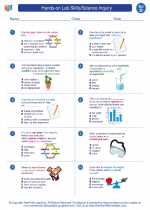Dispersion
Dispersion is the phenomenon of separating white light into its constituent colors, often referred to as the colors of the rainbow. This occurs when light passes through a medium that causes the different wavelengths of light to change speed by different amounts, resulting in the separation of colors.
Causes of Dispersion
The primary cause of dispersion is the variation in the speed of light through different materials. When light enters a medium such as glass or water, each color in the light spectrum travels at a different speed, causing the colors to spread out and become visible as a spectrum of colors.
Prism and Dispersion
A prism is a triangular piece of glass or other transparent material that can be used to demonstrate dispersion. When white light passes through a prism, the different colors are refracted by different amounts, causing them to spread out and form a spectrum. This process is known as dispersion.
Applications of Dispersion
Dispersion has various practical applications, including in the design of optical instruments such as spectrometers and telescopes. It is also essential in technologies that utilize the properties of different colors of light, such as in fiber optics and telecommunications.
Study Guide for Dispersion
- What is dispersion?
- What causes dispersion?
- How does a prism demonstrate dispersion?
- What are the applications of dispersion?
Understanding dispersion is important in the fields of physics, optics, and engineering. By grasping the principles of dispersion, we can better comprehend the behavior of light and its applications in various technologies.
.◂Science Worksheets and Study Guides Fourth Grade. Hands-on Lab Skills/Science Inquiry

 Worksheet/Answer key
Worksheet/Answer key
 Worksheet/Answer key
Worksheet/Answer key
 Worksheet/Answer key
Worksheet/Answer key
